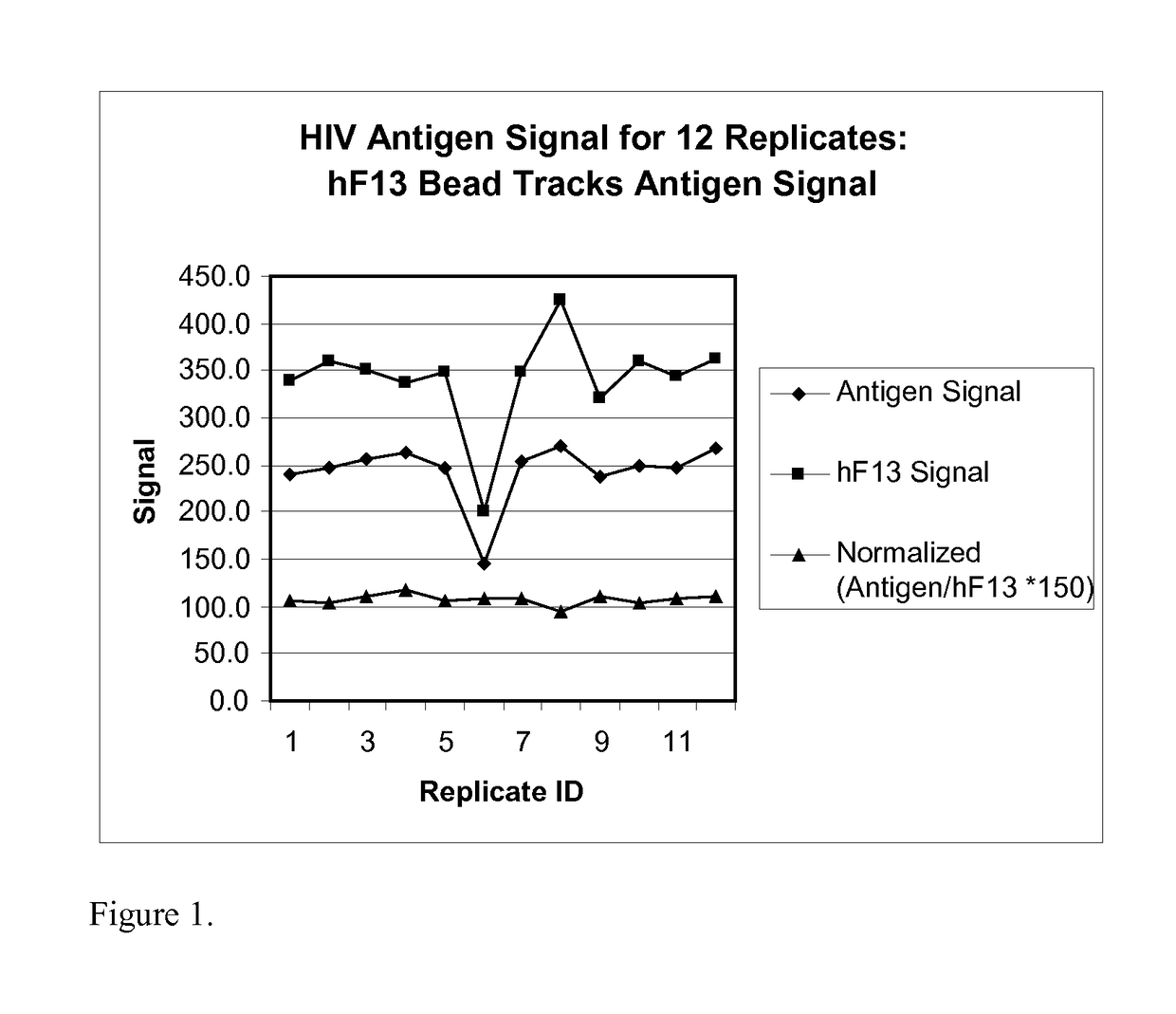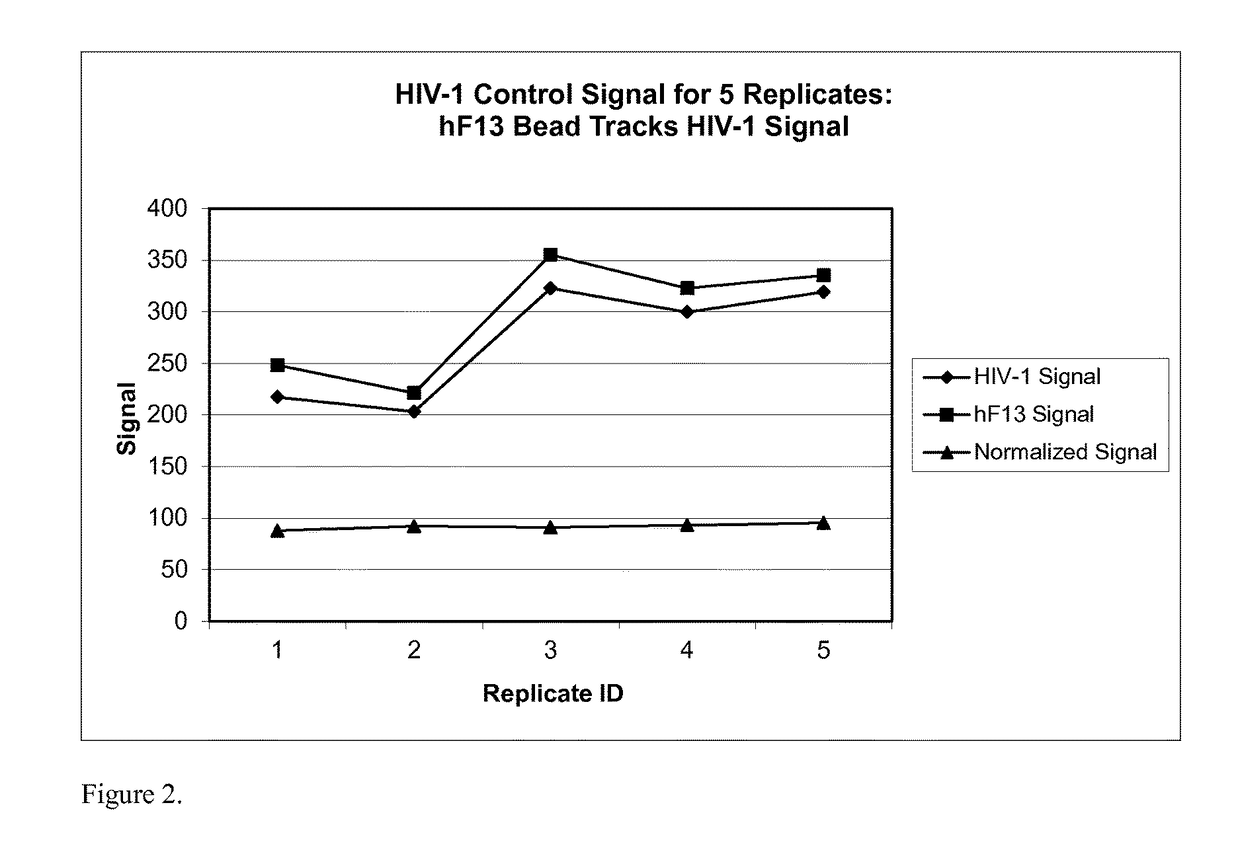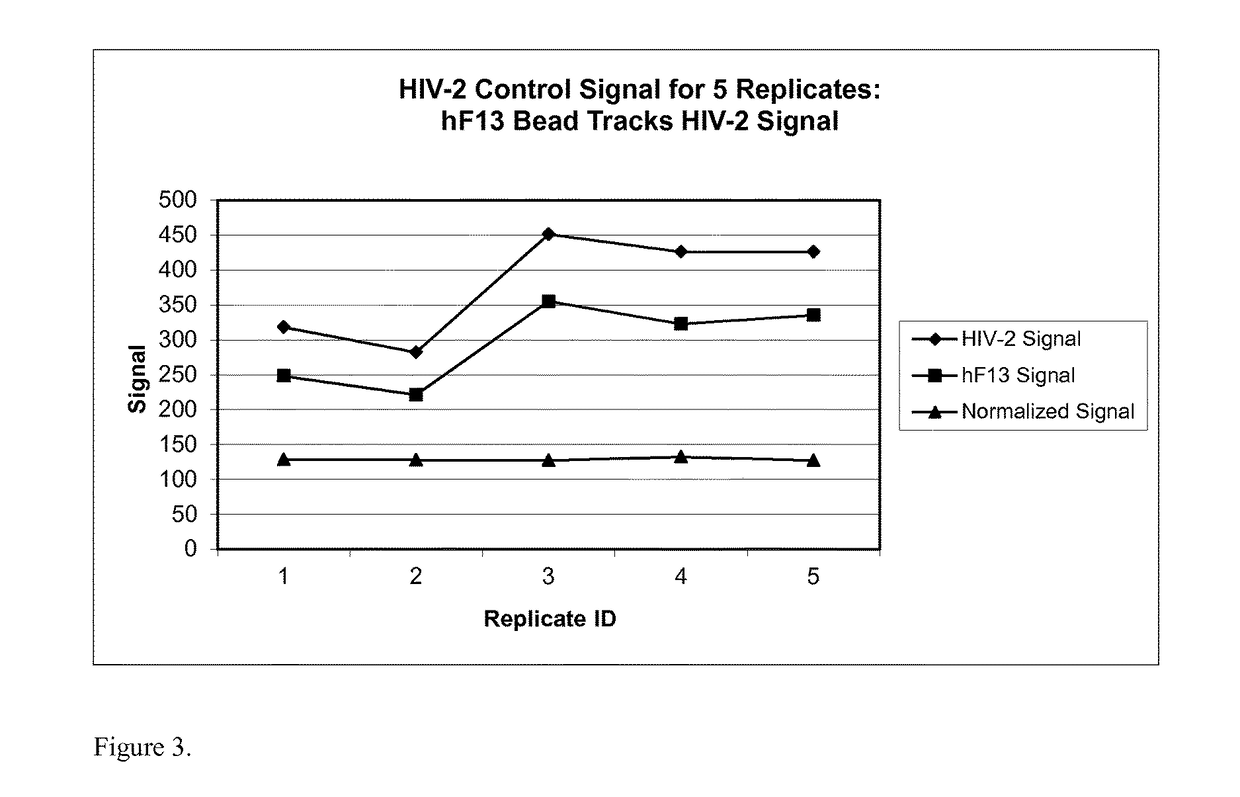Human factor XIII as a normalization control for immunoassays
a human factor and immunoassay technology, applied in the field of immunoassays, can solve the problems of high coefficient of variation, high error, and inability to detect the amount of analytes in a biological sampl
- Summary
- Abstract
- Description
- Claims
- Application Information
AI Technical Summary
Benefits of technology
Problems solved by technology
Method used
Image
Examples
example 1
[0167]This example demonstrates that a hFXIII bead included in an HIV detection assay can be used to detect unexpected and unacceptable variations in assay signal.
Methods:
[0168]All incubations are at 37° C. 25 μL of bead reagent containing beads for detection of HIV analytes, hFXIII, SVB, and ISB, and 25 μL sample are incubated for 28.5 min, then washed. 50 μL of Conjugate 1 reagent containing biotinylated conjugates is added to the beads and incubated 10 min, then washed. 25 μL Conjugate 2 containing concentrated SA-PE and 25 μL wash fluid are added to the beads and incubated 10 min. After washing, beads are resuspended in 50 uL wash fluid and sent to the detector. Beads are in a buffer containing triethanolamine and CHAPS (3[(3-Cholamidopropyl)dimethylammonio]-propanesulfonic acid), protein stabilizers, blockers, and preservatives. Conjugate 1 and Conjugate 2 are in phosphate buffer with NaCl, protein stabilizers, blockers, and preservatives. All buffers are pH 7-7.4. The starting...
example 2
[0173]This example demonstrates that using a hFXIII bead significantly improves the CV of the normalized signal when performing replicates of a multiplex control sample.
[0174]A multiplex control sample containing human polyclonal antibodies for HIV-1 and HIV-2 as well as rabbit monoclonal antibodies representing HIV-O was incubated with magnetic beads covalently coupled to antigens that specifically bind to the antibodies (target analyte beads). The HIV-1 detection bead was ligated to GP-160. The HIV-2 detection bead was ligated to SPOH. The HIV-O detection bead was ligated to AFR. The control sample was also incubated with hFXIII beads. The sample was processed as described in Example 1. Five (5) replicates of the assay were performed.
[0175]As shown in FIG. 2, the HIV-1 control signal was positively correlated with the hFXIII signal in each replicate. The normalized signal showed much less variation between replicates. As shown in Table 3, the CV % of the normalized signal was sign...
example 3
[0181]This example describes factors that influence the final fluorescent signal generated on the beads.
[0182]During development of the above assays, it was observed that replicate analysis of samples such as calibrators, controls or patient specimens (serum or plasma) could occasionally produce variable fluorescent signals on the assay beads resulting in high coefficients of variation. In some cases, the signal variation could be as high as 50% or more and was sufficient to produce a response classified as positive for some replicates but negative for others.
[0183]Numerous factors associated with assay chemistry as well as manual or automated sample processing are responsible for the magnitude of the final fluorescent signal generated on the beads. Some sources of signal fluctuation between replicates can be related to assay variations listed in Table 6.
[0184]
TABLE 6Factors that introduce signal fluctuation between replicates.Step-1 Bead - Sample variationssample dispense volumebea...
PUM
| Property | Measurement | Unit |
|---|---|---|
| diameter | aaaaa | aaaaa |
| diameter | aaaaa | aaaaa |
| diameter | aaaaa | aaaaa |
Abstract
Description
Claims
Application Information
 Login to View More
Login to View More - R&D
- Intellectual Property
- Life Sciences
- Materials
- Tech Scout
- Unparalleled Data Quality
- Higher Quality Content
- 60% Fewer Hallucinations
Browse by: Latest US Patents, China's latest patents, Technical Efficacy Thesaurus, Application Domain, Technology Topic, Popular Technical Reports.
© 2025 PatSnap. All rights reserved.Legal|Privacy policy|Modern Slavery Act Transparency Statement|Sitemap|About US| Contact US: help@patsnap.com



